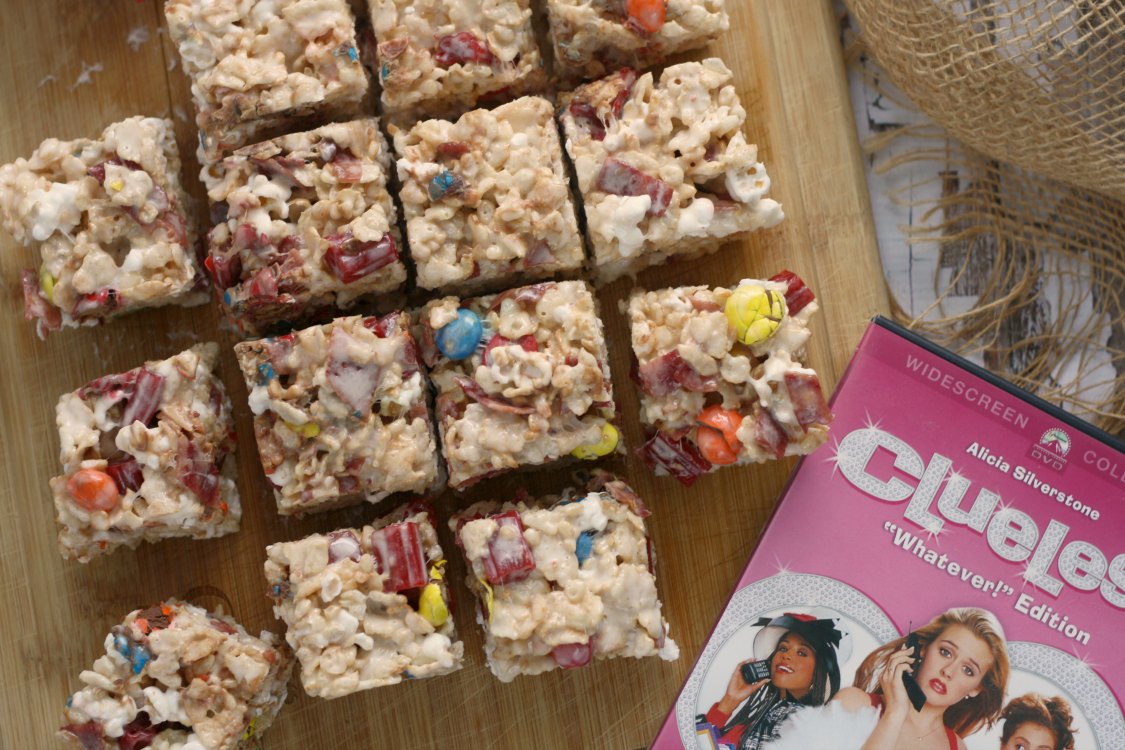I also think it's pretty fitting that my #CookwithJulia time both kicked-off with (#SundaySupper) and finished with (Bread Baking Babes & Buddies) a "planned" event that fell neatly into the whole scheme of things. Fitting in that while based on French technique, Julia's recipes really are universal and embraced by all. Over the past eleven days, I've run across people who grew up watching Julia...people who were introduced to her via a blog turned book turned popular film...and even people who were only just being introduced to her. But every person, no matter where they were on their journey with Julia, seemed to feel the impact that she made on the culinary world.
For me, this time spent with Julia produced (one of my favorite fish dishes) Salmon en Papillote, (a dish cooked for her by a master chef and my personal mentor, Rick Bayless) Chile & Honey Glazed Pork Ribs, Ratatouille (the ever-popular favorite peasant dish made with only veggies but packing mad-flavor that even drove the kids to swoon), a Simple Cucumber Salad (fun, quick...and the perfect thing to do with that summer cuke bounty), (a hearty loaf perfect for cutting in fat slices, toasting, and topping with a fried egg with a runny yolk cascading over the edge) Country Bread, Sauce Béarnaise (adorning filet mignon to make my "last supper" request meal), and now three loaves of crusty-on-the-outside, soft-on-the-inside French Bread in the form of Bâtards.
I'm baking this bread along with the Bread Baking Babes and Buddies. We're all making Julia's French Bread, but of course everybody's will turn out differently since we're in different kitchens with various weather conditions spread out across the globe. Julia gives one basic recipe for the French Bread, but it is pages long since she takes the time to diagram and explain each step...which should make baking this bread doable for bread bakers at any level. As you can see in the photo below (a little snip from the book), you can make this one recipe into many forms. That in and of itself (the deciding) is the hardest part of the recipe! Initially I was going to make baguettes since I just bought myself a baguette pan. I bought it because my oven is small and my baking stone is round - and those two things combined make it hard for me to bake baguettes. The pan allows me to bake three at once in my oven by sliding the pan (that the bread rose in, I might add) right onto the stone. I love it. But upon reading through the recipe, I realized that true baguettes are actually 24-inches long and not many home ovens can capacitate them. I've actually been making bâtards thinking they were baguettes. So, I will continue to make bâtards in my "baguette" pan...and I'll like it.
Thank you for encouraging me to be fearless in the kitchen. Thank you for reminding me never to apologize about a meal that I put my time, my heart, and my soul into cooking. Thank you for following your heart...and your stomach. Thank you for your humor. Thank you for being you and inspiring me...and HAPPY 100, Julia Child!
Julia Child's French Bread: Bâtards
by
Prep Time: 7 hours +
Cook Time: 25 minutes
Keywords: bake bread French
Ingredients (3 Bâtards)
- 2¼ tsp. active dry yeast (or 1 cake fresh yeast .6 oz.)
- ⅓ c. + 1¼ c. warm water, divided
- 3½ c. (~16 oz.) bread flour + more as needed
- 2¼ tsp. fine salt
Instructions
Combine yeast and ⅓ cup of water in the bowl of a mixer fitted with the dough hook attachment, stirring once to combine. Let sit until yeast has bloomed (will look creamy & frothy), ~5 minutes. Add flour, salt, and remaining water to bowl and turn on mixer on low speed. Mix until all of the flour is absorbed. Turn off mixer and let rest for 2-3 minutes.
Turn mixer up to medium speed and knead for 2-3 minutes. The dough should start to clean itself from the side of the bowl. If at this point, it seems incredibly sticky, sprinkle in a bit more flour, one tablespoon at a time until it does start to clean the bowl. Continue to knead on medium speed for another 5-10 minutes or until you can push the dough with a finger and it bounces back into place. Dough should be slightly sticky - enough that if you pinch it for a couple of seconds, it will stick to your fingers, but not so much that you can't give it a quick poke without taking your finger away covered in dough. Let dough rest for 3-4 minutes.
Give dough another quick knead, ~1 minute. Form dough into a ball and place into a clean bowl (picture 1) with room enough to grow 3-times its size (a little over 10½ cups capacity)*. Cover bowl with plastic and allow to rise at room temperature until it has tripled in size, this should take 3-5 hours.
Once dough has fully risen, you will probably see some big bubbles on the surface and it should have a slight hump and be light and spongy when pressed (picture 2 & 3). Lift the dough out of the bowl using your fingers or a rubber spatula to loosen the dough from the edges and onto a lightly floured surface. With lightly floured palms, flatten dough gently, but firmly into a round, pinching any gas bubbles to deflate. Lift the bottom right hand edge of the circle up and flop it over to the far side. Repeat three times, folding all of the edges in the same fashion. Gently flip dough over and tuck edges of dough under while turning the dough in a circle until you have a large cushion.
Lift back into bowl and cover with plastic. Allow to rise again, although it won't quite triple this time (but it will come close), until dome shaped and light and puffy when poked (picture 4).
Once again, loosen the sides of the dough from the bowl and turn it out onto a lightly floured work surface. Gently flatten it out a bit (picture 5) and then cut into 3 equal pieces (picture 6)*. Once each piece is cut, flip one side over onto the opposite side (on each piece) and let them rest 5 minutes before forming (picture 7).
While your dough is resting, prepare your rising surface. This can be a canvas or linen towel that has been well-floured, a board with cornmeal spread on the surface, or a baguette pan, if you wish.
Bring one piece of the rested dough to your lightly floured work surface and set the other two aside, covered with plastic.
Turn dough upside down and pat firmly, but gently into an 8- to 10-inch oval with your lightly floured palms (picture 8). Fold the dough in half lengthwise by bringing the far,long edge towards you to meet the other edge (picture 9). Extend your hands and seal the edges of the dough together with your thumbs (picture 10). Roll the dough a quarter turn so that the seam is on top (picture 11). Flatten dough once more into an oval using your palms. Using the side of one hand, press a "trench" down the length of the oval. Once again, pull the far edge over and to the near edge (picture 12). This time seal the edges together with the heel of one hand (picture 13) and then roll the dough a quarter of a turn so that the seam is on the bottom (picture 14). Next, roll the dough back and forth using the palms of your hands to lengthen the dough (picture 15). You should start in the middle, with one (or both, one on top of the other) palms and work your way out. Gradually work your hands towards the two ends while rolling forward and back fairly quickly. For bâtards, you should have a 16- to 18-inch rope (24-inches for a baguette) (picture 16). Deflate any gas bubbles by pinching them and try to keep circumference of dough as even as possible.
Set the shaped piece of dough onto your prepared surface for rising. If you're using floured canvas or linen, set it seam side up...if you're using a board with cornmeal or a pan, set it seam side down (picture 17). If using cloth, pinch a ridge ~3-inches high between each bâtard. Cover dough with plastic and allow to rise until almost tripled in volume, 1½-2½ hours (picture 18).
Preheat oven to 450° F during final 30 minutes of rising time.
If you've used cloth, you'll need to carefully roll the loaves over and onto a surface dusted with cornmeal. Slash the top of each piece of dough several times and moisten the surface of the dough by gently misting it with water from a spray bottle. Immediately slide into preheated oven and close the door. After 3 minutes, quickly open the oven door and spritz the dough with water again. Repeat this after another 3 minutes. And another 3 minutes. Then leave the door closed and continue baking for a total time of ~25 minutes. The crust should be golden and crisp and the bottom should make a hollow sound when thumped.
Cool the bread on a wire rack or set upright in a basket to allow air to circulate freely around each loaf. Allow to cool completely.
French bread is best eaten the same day that it was baked, but will last for a day or two longer if it wrapped airtight and refrigerated. You can also wrap very well and freeze (once completely cool). To thaw, unwrap a loaf and place on a baking sheet set in a cold oven; heat to 400° F and in 20 minutes, the outside will be hot and crisp and the inside will be thawed.
A handy tip from Julia: measure 10½ cups water into your bowl (for rising) and mark (literally or mentally) where that "line" is. Dry out bowl and remember that spot so you can easily tell when your bread has risen to 3x its volume.
If at any point you want to delay the rising action of your dough, you can put it in the refrigerator to rise. I did my second rise in the refrigerator overnight (12 hours) because I started my dough fairly late. Cooling it down slows down the rising process. If it hasn't risen fully in the fridge, let it finish at room temperature when you're ready. If it has risen, go ahead and start right at that point. Check out Mastering the Art of French Cooking Volume 2 for more information.
I decided to turn this French bread into Bâtards since I just purchased a pan that would allow me to let 3 loaves rise and bake all at the same time. I love the pan and I know I'll use it often. It's called a baguette pan, but since a true baguette is actually 24-inches long and my pan is not, I suppose I'll be making a lot of bâtards (16- to 18-inches long) instead. I'm okay with that.
Powered by Recipage










